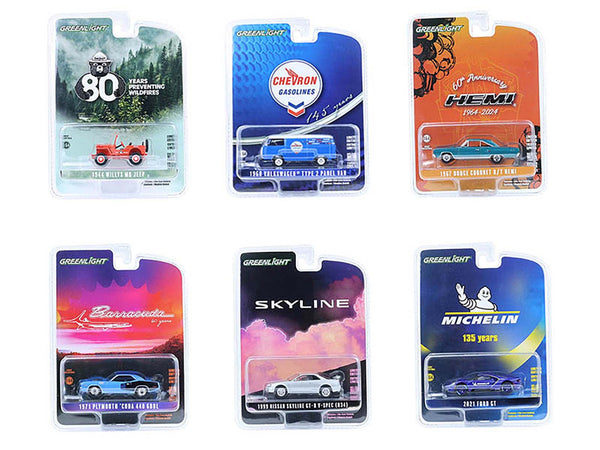
Car warning signs dashboard: What Your Car is Trying to Tell You
Related Products
Share
Is your car trying to tell you something? Pay attention to the warning signs on your dashboard! Your car’s dashboard is like your vehicle’s way of communicating with you. It uses various warning lights and indicators to let you know when something is amiss. But do you know what each warning sign means?
In this article, we bring you the ultimate dashboard warning signs reference. Whether it’s a flashing red light, a blinking amber indicator, or a steady green signal, we’ve got you covered. Our comprehensive guide will help you understand the meanings behind these warning signs.
We’ll walk you through the essential warning signs, including those for engine problems, brake issues, battery troubles, and more. This knowledge will empower you to take action promptly, preventing potential breakdowns or costly repairs. You don't have to be a car expert to decode these signals; you just need the right information.
So, hop in and buckle up as we guide you through the information maze of dashboard warning signs. It's time to become fluent in the language of your car's dashboard!
Your car's dashboard is more than just a collection of lights and symbols; it's a vital communication tool that can alert you to potential problems with your vehicle. Understanding the warning signs on your dashboard is crucial for your safety and the longevity of your car. Ignoring these signals could lead to breakdowns, expensive repairs, or even accidents on the road.
When you see a warning light or indicator on your dashboard, it's your car's way of saying, "Hey, pay attention! Something isn't right." By knowing what each warning sign means, you can take immediate action to address the issue, preventing further damage or potential hazards.
Being familiar with the dashboard warning signs also gives you peace of mind. Instead of feeling helpless when a light turns on, you'll have the knowledge and confidence to handle the situation appropriately. It empowers you to make informed decisions about your vehicle's maintenance and repair needs.
So, let's dive into the world of dashboard warning signs and unravel the mysteries behind them. After reading this comprehensive guide, you'll be equipped with the knowledge to decipher the signals your car is sending you.
The engine is the heart of your car, and any issues with it can have a significant impact on its performance. Here are some common warning signs related to the engine:
1. Check Engine Light: Perhaps the most notorious warning light, the check engine light, can indicate a range of problems, from a loose gas cap to a more serious engine issue. When this light illuminates, it's crucial to get your car checked by a professional to diagnose and fix the underlying problem.
2. Engine Temperature Warning: If you see a thermometer symbol or an exclamation mark inside a triangle, it means your engine is overheating. This could be due to a coolant leak, a malfunctioning thermostat, or a faulty radiator. Ignoring this warning could result in severe engine damage, so pull over safely and allow your car to cool down before seeking assistance.
3. Oil Pressure Warning: A red oil can symbol or an oil pressure gauge dropping to zero indicates low oil pressure. This could be caused by a leak, a faulty oil pump, or low oil levels. Driving with low oil pressure can cause irreversible damage to your engine, so it's essential to check your oil level and seek professional help if needed.
The transmission is responsible for transferring power from the engine to the wheels. Here are some warning signs related to the transmission:
1. Transmission Temperature Warning: Similar to the engine temperature warning, this warning light indicates that your transmission is overheating. It could be caused by low transmission fluid, a malfunctioning cooler, or internal issues. Ignoring this warning can lead to transmission failure, so pull over safely and allow your car to cool down before seeking assistance.
2. Transmission Fluid Leak: If you notice red or brown fluid pooling under your car, it could be a transmission fluid leak. Low transmission fluid can cause shifting issues, slipping gears, or complete transmission failure. It's critical to address the leak promptly to avoid costly repairs or a breakdown on the road.
3. Gearbox Warning: This warning light, often in the shape of a gear or exclamation mark, indicates a problem with the transmission system. It could be a damaged sensor, a faulty solenoid, or a more serious internal issue. If this light illuminates, it's best to have your car inspected by a professional.
The brakes are arguably the most important safety feature of your vehicle. Here are some warning signs related to the brakes:
1. Brake System Warning: This warning light, usually in the shape of an exclamation mark inside a circle, indicates an issue with the braking system. It could be due to low brake fluid, worn brake pads, a faulty ABS sensor, or a more serious problem. If this light turns on, have your brakes inspected as soon as possible to ensure your safety on the road.
2. ABS Warning: The ABS (Anti-lock Braking System) warning light signifies a problem with your ABS system. It could indicate a faulty sensor, a damaged ABS module, or a problem with the brake fluid. If this light illuminates, it's advisable to have your car checked by a professional, as your ABS system may not function properly in an emergency braking situation.
3. Brake Pad Wear Indicator: Some cars have a specific warning light that indicates when the brake pads are worn and need to be replaced. It's essential to address this warning promptly, as worn brake pads can compromise your stopping power and increase the risk of accidents.
The electrical system in your car is responsible for powering various components and ensuring their proper functioning. Here are some warning signs related to the electrical system:
1. Battery Warning: This warning light, often in the shape of a battery, indicates a problem with your car's battery or charging system. It could be due to a faulty alternator, a loose or corroded battery terminal, or a weak battery. If this light turns on, it's advisable to have your battery and charging system checked to avoid unexpected breakdowns.
2. Alternator Warning: If you see a battery-shaped warning light accompanied by an "ALT" or "GEN" label, it means there's an issue with your car's alternator. The alternator is responsible for charging the battery while the engine is running. A faulty alternator can lead to a discharged battery and other electrical problems. Have your alternator checked promptly to prevent further issues.
3. Lighting System Warning: This warning light, often in the shape of a light bulb, indicates a problem with your car's lighting system. It could be a blown bulb, a faulty wiring connection, or a malfunctioning control module. It's essential to address this warning, as proper lighting is crucial for your safety on the road.
The fuel system ensures the proper delivery of fuel to the engine for combustion. Here are some warning signs related to the fuel system:
1. Fuel Level Warning: This warning light, often in the shape of a fuel pump or a gas can, indicates a low fuel level. It's a reminder to refuel your car to avoid running out of gas unexpectedly. Ignoring this warning can lead to a stalled vehicle in an inconvenient or unsafe location.
2. Fuel Injection System Warning: If you see a warning light that resembles an injector or an engine with an arrow pointing down, it means there's a problem with your car's fuel injection system. It could be a clogged fuel injector, a faulty fuel pump, or a sensor issue. Addressing this warning promptly is crucial to maintain proper engine performance and fuel efficiency.
3. Evaporative Emission Control System Warning: This warning light, often in the shape of a gas pump or an engine with a wave pattern, indicates a problem with your car's evaporative emission control system. It could be a loose gas cap, a faulty purge valve, or a leak in the system. Promptly addressing this warning can prevent fuel vapor leaks and reduce harmful emissions.
The cooling system is responsible for regulating the engine's temperature and preventing overheating. Here are some warning signs related to the cooling system:
1. Coolant Temperature Warning: This warning light, often in the shape of a thermometer or a radiator, indicates that your engine is running hot. It could be due to low coolant levels, a faulty thermostat, or a malfunctioning cooling fan. Ignoring this warning can lead to severe engine damage, so it's essential to pull over safely and allow your car to cool down before seeking assistance.
2. Coolant Level Warning: If you see a coolant-shaped warning light or an indicator showing a low coolant level, it means you need to check your coolant reservoir. Low coolant levels can lead to overheating and engine damage, so it's crucial to address this warning promptly and top up your coolant if necessary.
3. Radiator Fan Warning: Some cars have a specific warning light that indicates a problem with the radiator fan. It could be a faulty fan motor, a damaged fan blade, or a malfunctioning fan relay. If this light turns on, it's advisable to have your cooling system inspected to prevent overheating and potential engine damage.
Understanding the warning signs on your car's dashboard is not only essential for your safety but also for the longevity of your vehicle. By promptly addressing these signals, you can prevent potential breakdowns, expensive repairs, or even accidents on the road.
Regular maintenance is key to keeping your car in optimal condition. It's important to follow the manufacturer's recommended maintenance schedule, which includes regular inspections, fluid changes, and component replacements. By staying proactive and attentive to your car's warning signs, you can catch problems early and save yourself from costly repairs down the line.
Remember, your car's dashboard is your vehicle's way of communicating with you. So, the next time a warning light or indicator illuminates, don't ignore it. Take action, seek professional help if needed, and keep your car running smoothly and safely for years to come.
Now that you're fluent in the language of your car's dashboard, you can hit the road with confidence and peace of mind. Happy driving!





